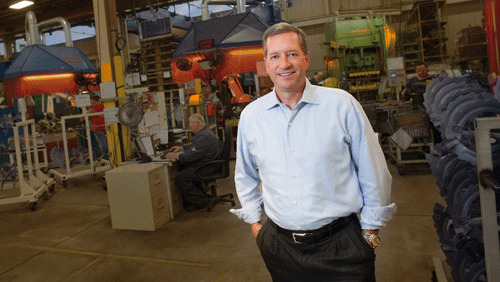Oct 26 2012
Lean Leadership
 In the SME Society of Manufacturing Engineers discussion group on LinkedIn, Sam MacPherson asked for comments on the idea that Lean’s greatest need is he willingness and ability to lead.
In the SME Society of Manufacturing Engineers discussion group on LinkedIn, Sam MacPherson asked for comments on the idea that Lean’s greatest need is he willingness and ability to lead.
Following is the response I posted:
“Willingness and ability to lead” is too generic, and not what I would answer if asked what Lean’s greatest need is.
I look at it from a manufacturing perspective. As Art Smalley pointed out in his 2006 Shingo Prize conference presentation, what goes by the name of Lean in the US gives short shrift to the engineering of production lines. To me, the greatest need still is to put the proper focus on it.
Applications outside of manufacturing are not my focus, but I think that, likewise, the greatest need is to focus on the core of the activity. When the Gilbreths worked on hospitals 100 years ago, they didn’t try to streamline peripheral functions like billing; instead, they worked on the design of operating rooms, and came up with the now standard way, where nurses prepare tools and pass them to surgeons.
Of course, top management must be willing and able to lead, but it has to be in the right direction, to put the focus on the way work is done. And it is tricky.
On the one hand, Art Byrne tells CEOs to personally participate in Kaizen events, which certainly is a way to convey the message that this activity matters.
On the other hand, it can lead the organization to overemphasize Kaizen events, at the expense of other types of necessary actions. It is also impossible for other employees to forget who is on the team.
Generally speaking, whether on a Kaizen even or a Gemba walk, if the CEO expresses an idea on a technical issue, most will agree because it comes from the CEO, and a few will make a point of disagreeing, because it comes from the CEO. In neither case does the idea receive an objective assessment.
 See on
See on 
Oct 26 2012
First anniversary of Toyota Plant in Tupelo, MS
See on Scoop.it – lean manufacturing

This is about Toyota’s newest plant in North America, in Tupelo, MS. It has several surprising features, such as:
The reason you usually do the opposite is that it gives you more flexibility to change the layout. Utilities provided from above are easier to relocate than if they come out the concrete floor.
See on djournal.com
Share this:
Like this:
By Michel Baudin • Press clippings 3 • Tags: Toyota, Toyota Production System, TPS